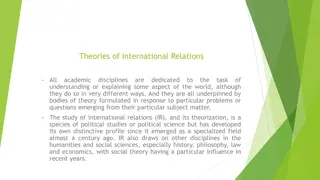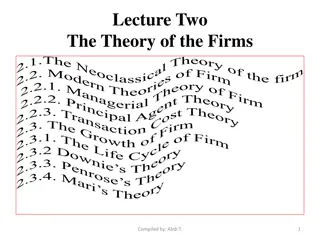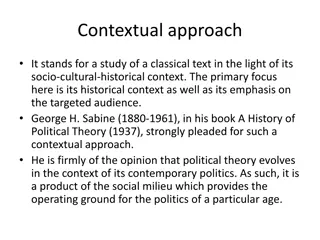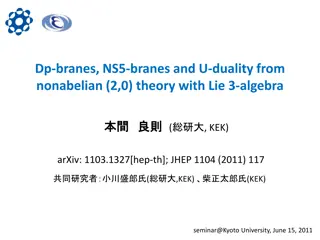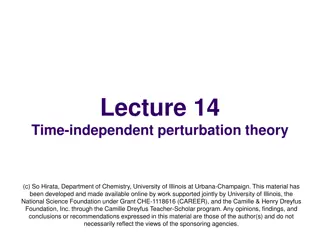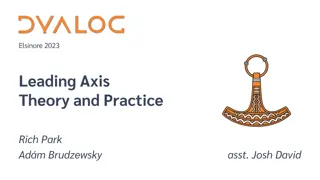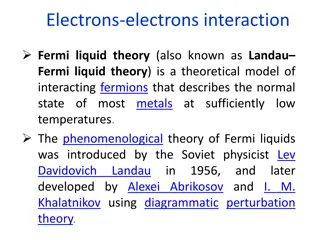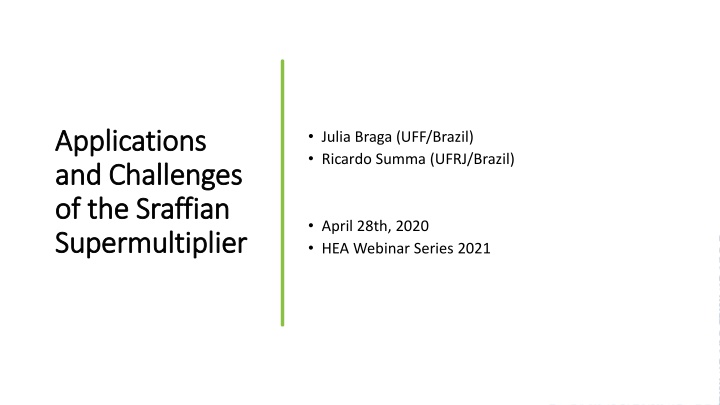
Challenges and Applications of the Sraffian Supermultiplier Model
Explore the challenges and applications of the Sraffian Supermultiplier model, discussing concepts like capacity utilization, autonomous demand, and misconceptions. Discover extensions of the model incorporating realistic elements and analyzing macroeconomic policies. Learn about financial constraints affecting autonomous demand growth in a Stock and Flow consistent approach.
Download Presentation

Please find below an Image/Link to download the presentation.
The content on the website is provided AS IS for your information and personal use only. It may not be sold, licensed, or shared on other websites without obtaining consent from the author. If you encounter any issues during the download, it is possible that the publisher has removed the file from their server.
You are allowed to download the files provided on this website for personal or commercial use, subject to the condition that they are used lawfully. All files are the property of their respective owners.
The content on the website is provided AS IS for your information and personal use only. It may not be sold, licensed, or shared on other websites without obtaining consent from the author.
E N D
Presentation Transcript
Applications Applications and Challenges and Challenges of the of the Sraffian Sraffian Supermultiplier Supermultiplier Julia Braga (UFF/Brazil) Ricardo Summa (UFRJ/Brazil) April 28th, 2020 HEA Webinar Series 2021
1) If Blanchard followed the supermultiplier approach, he wouldnt have implied a capacity utilization of 50%. If demand falls to a lower level, stock of capital will slowly decrease, and this means that the degree of utilization increases again (there is an adjustment, even if it does not return entirely to the previous level). 2) It's a level effect, but in order to avoid the decrease of the capital stock, autonomous demand must grow at a faster rate.
Common Misconceptions: Its for the long period not for the short run . NO!-> Remember Samuelson's Multiplier Accelerator Interaction Model meant to explain business cycles. Non-Capacity Creating Autonomous Demand X Exogenous Demand. Autonomous but not exogenous : It is autonomous from production decisions . Not systematically related with production decisions but there is no closed theory for their determinants. But it can be endogenous to the income because, for instance, a policy rule. There is no room for autonomous investment NO! (e.g. innovation); But by principle of capital adjustment, aggregate capacity creating investment must follow autonomous demand.
Extensions have been developed to include more realistic elements into the Supermultiplier model Different components of autonomous demand and its determinants The role of macroeconomic policy: with fiscal and monetary Policy Rules to determine autonomous components of the demand Applied to analyze concrete experiences in advanced and developing economies. This approach has flexibility to deal with different realities (Policy, external, financial) Constraints to demand-led growth - BoP restrictions; Financial Bubbles and Crisis; Conflict Inflation
Financial Constraints to autonomous demand growth: In the perspective of a Stock and Flow consistent approach : include worker s debt to income relation ->Pariboni (2016), Mandarino at al. (2020); residential investment and households debt -> Petrini and Teixeira (2020); public debt to output relation -> Freitas and Cavalcanti (2020); indebtedness of the non-financial business sector -> Freitas and Brochier (2019). External constraints: external imbalances and unsustainable path of foreign debt-to-export ratio (Serrano and Souza, 2000, Medeiros and Serrano, 2006) maximum acceptable level of foreign debt-to-export ratio (Bhering et al., 2019); Real resources constraints : Labor force and productivity (Palley, 2019; Fazzari et al.,2020, Nah and Lavoie (2019a,b)); Policy constrained demand-led growth: conflict inflation and inflation targeting (Summa, 2016, Serrano, 2019), other policy rules, etc.
Research agenda on empirical and applied versions of the Supermultiplier model 1) Accelerator is very easy to obtain econometrically 2) Consumption Function (multiplier) not so easy because since non capacity creating autonomous demand (especially autonomous consumption) is not constant over time, you must proper identify this component and separate it from induced consumption (2) No so easy as well is to differentiate the impact of individual components of autonomous demand since it is the group of non capacity creating autonomous demand that minds.
Research agenda on empirical and applied versions of the Supermultiplier model 1) Some papers use econometric tools (with differ methodological approaches) for different countries and periods (Braga, 2006, Medici, 2011, Girardi and Pariboni, 2016,2020; Fiorito, 2018; Braga, 2020; P rez-Montiel and Erbina, 2020; Fazzari et al. 2020; Girardi et al., 2020; Haluska et al., 2020); (2) Multi- sectorial (input-output) Supermultiplier models calibrated by empirical data (Freitas and Dweck (2010), Cornelio, Freitas and Busato, 2018, Portella-Carbo (2016), Portella-Carbo and De Juan (2019)); (3) Simulations of the Supermultiplier mechanism with stylized calibrated parameters (Haluska, Summa and Serrano (2021)).
Brazilian Keynesian Association Since 2008 2nd largest Keynesian Association (150 signatories) 14th Meeting 2021 Products : Books (3rd) Thematic Reports - collections of members III WORKSHOP ALUMNI AKB Students graduated from the AKB School. V ESCOLA DA AKB-YSI 2021. AKB School (5th) - Largest Summer School in Brazil Partnership with YSI INET SEP. https://associacaokeynesianabrasileira.org/ 11
THANK YOU! JBRAGA@ID.UFF.BR 12






